Today, I want to share a wonderful hexagonal thinking idea to build connections with your language learners starting on Day 1, regardless of the levels you teach.
I had shared about this idea last year, but I did so through a video in my YouTube channel. However, the video is in Spanish because in my channel I create videos in whatever language I feel like speaking on a given day. For that reason and because I have received many questions about it, I am making a blog post on using hexagonal thinking to build connections starting the first day of school.
I always like to give credit where credit is due, so I want to say that I first heard about the idea of using hexagonal thinking in Spanish language class from Profe Taylor-Arnold at ATTSP 2022 in Puerto Rico. She briefly talked about how she used hexagonal thinking for supported output and this was the moment I caught the hexagonal fever.
After that, I decided to dive deep into hexagonal thinking and found many wonderful ways to use it in my classes.
In this blog post, I only share one of the many ways in which you can integrate hexagonal thinking into your language classes, I am calling it “connections through hexagonal PQAs.” Plus, I am sharing my FREE resource for you to try it.
But before I tell you more about hexagonal PQAs connections, let’s define hexagonal thinking.
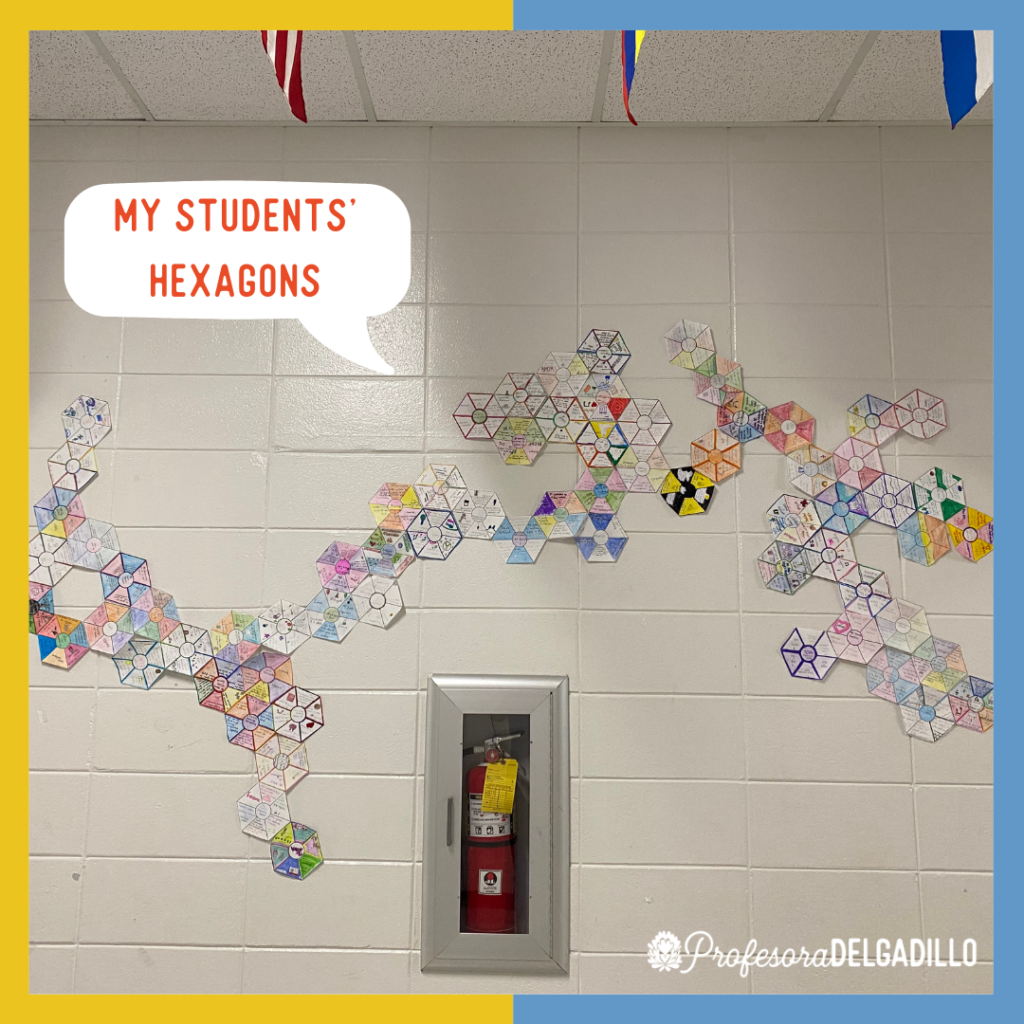
So, what exactly is hexagonal thinking?
It is a classroom thinking strategy that fosters connections between ideas, in this example, ideas and people. It involves students recording ideas or important details about the content (which could be anything) on hexagonal tiles. Students, then, create a web of connections.
Hexagonal thinking has been used in many classrooms across subjects. ELA and social studies educators use it the most, but we, world language teachers, are about to play catch up.
What are Connections Through Hexagonal PQAs?
Hexagonal personalized questions and answers (PQAs) connections consists of providing learners with six key questions to answer about a topic in a hexagon template.
The learners will illustrate and/or write (depending on level) the answer to each question.
To give you an idea, I will you my back-to-school example hexagonal pqas connection-building activity.
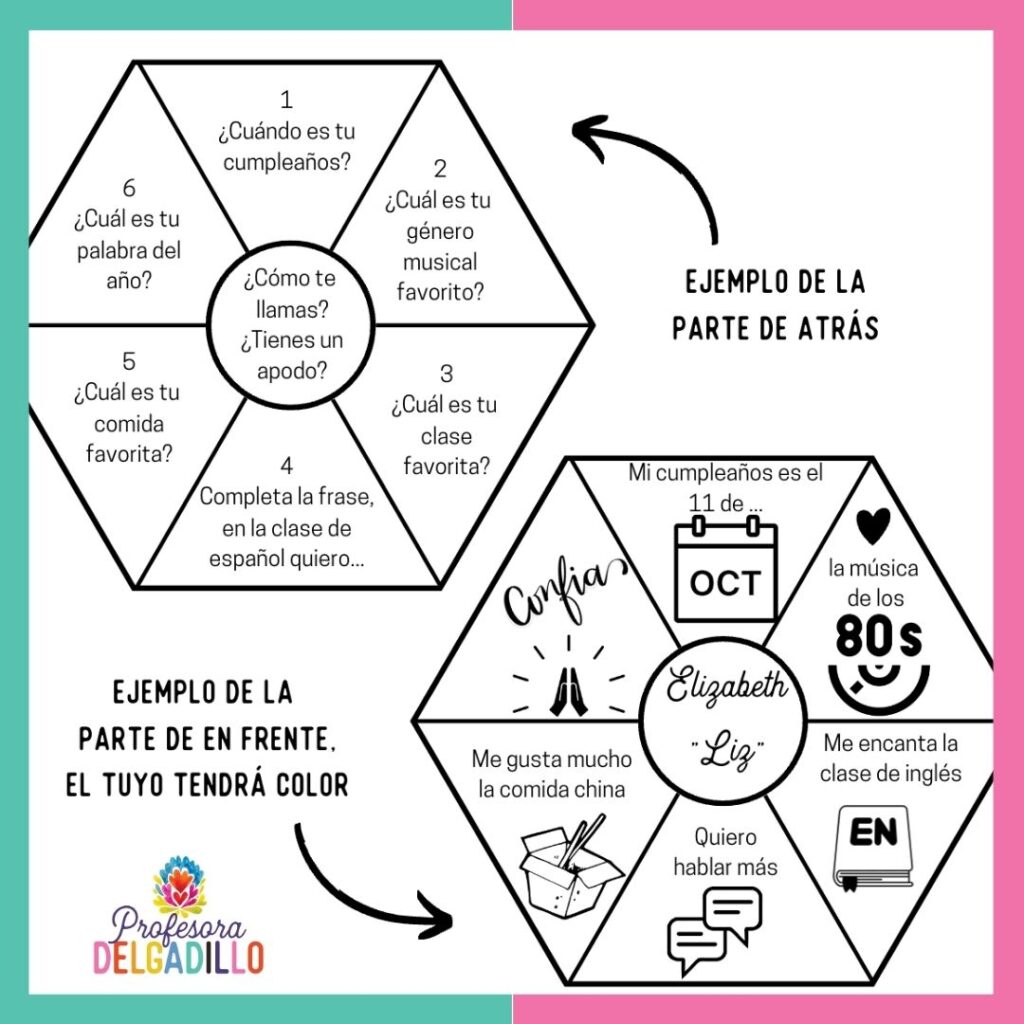
How I set up my Hexagonal PQAs Connection Building Activity for Back to School?
First, as students come in on Day 1, I give them a blank hexagon template. The instructions are listed for learners as in the image below.
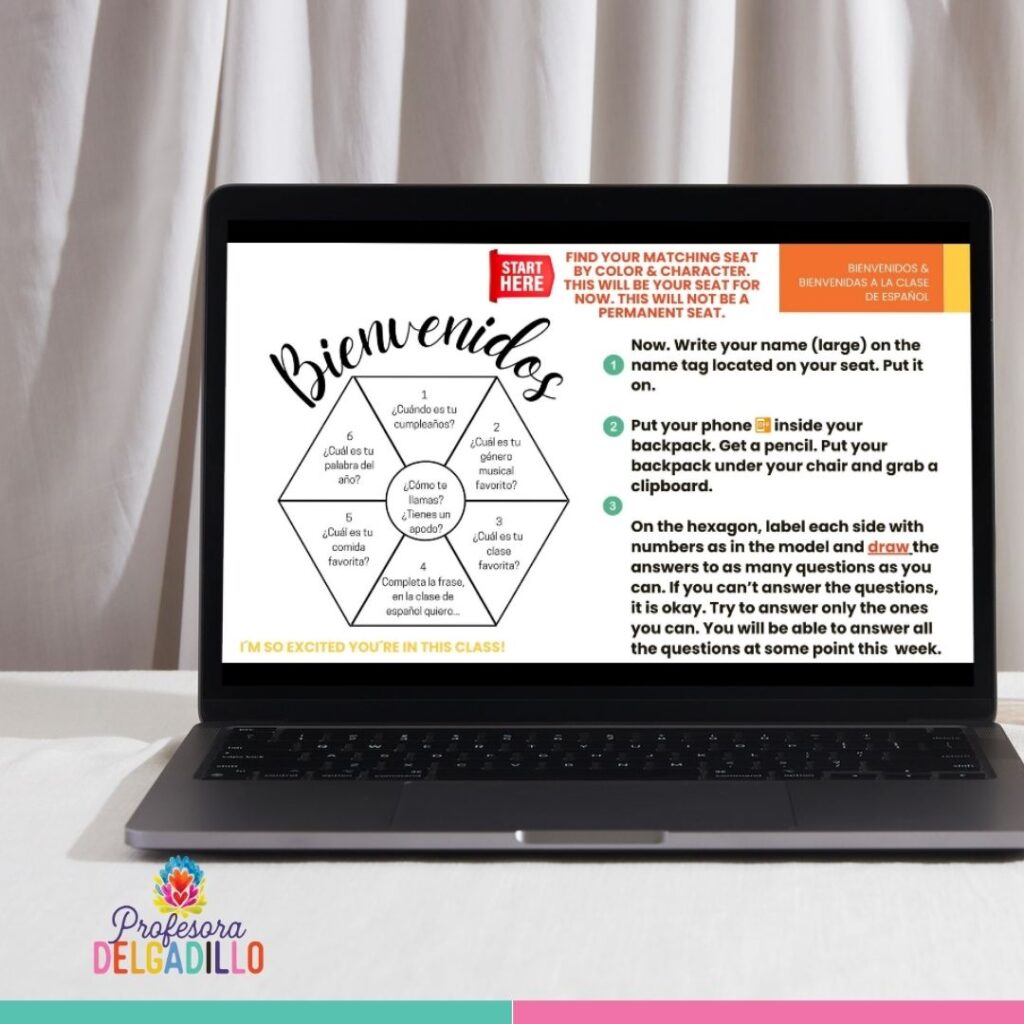
Notice that the instructions say they should draw or write the answer to as many questions as they can and that it is 100% okay if they can’t answer the questions yet.
Second, during back to school Day 1, I take attendance and then proceed to a short presentation about myself and we do a comprehension check via Blooket. I am just sharing this for context because before I start doing any special person interviews (pqas), I have to be vulnerable and make my learners feel safe by sharing about myself first and who I am as a human and teacher. Having done attendance, my presentation, the comprehension check, and a brain break. Only then, I call for a volunteer to come and answer some personalized questions (this is called a special person interview which I learned from Bryce Hedstrom). I make it very clear that they will have all the support they need to successfully answer the questions when I call for volunteers and I always have one volunteer.
Third, I let students know that they have to listen to the interview with the intention of understanding. The interview consists of six questions, well, seven if you include the name question. I also tell learners that I will pause after each question giving them 2 minutes to draw/write the answer to any questions that were left blank initially in their hexagon.
I ask the volunteer Question 1, allow the volunteer to answer out loud, ask a few different learners the same question (to recycle the language and make connections among learners), but shortly I always come back to the volunteer. Then, I give learners 2 minutes to fill in any questions they weren’t able to answer as we do the interview.
Fourth, I lead a write-and-discuss (strategy I learned from Mike Peto). Basically, a write-and-discuss is a short comprehensible summary of the input delivered, in this case, we write a paragraph about the student I interviewed. I love write-and-discuss because it models writing and it can be adjusted to any level.
Fifth, depending on the length of your class, you may have time to allow them to decorate and color during class or let learners know they need to decorate and color at home.
This is my Day 1.
If you are more of a visual learner and you teacher Spanish, I made a video about this activity back in January of 2023. You can check it out below.
Day 2 is the day when we come back, and many activities can be spun out of these completed hexagons. Here are some suggestions:
- Use a digital wheel like this one to activate comprehension of the previous day’s interview. You can make a copy of this wheel and also use it to ask different students random questions. They will feel safe to answer as they have their own hexagon as a scaffold.
- Put learners in groups and give them a die to roll. Have learners ask the question about the number that was rolled and encourage learners to use rejoinders where appropriate. I have a free activity already made that you can get along with the hexagon templates and the interview sides here.
- You can do the Inside Outside Circles Activity with learners using their hexagons for support as needed.
When Connections are Made with Hexagonal PQAs
Still on Day 2 (or maybe Day 3 for you since my classes are 90 minutes long), after we interact a lot with each other and the input in the hexagons, I now randomly group students again. I suggest groups of six. Normally, my groups are 3-5 students depending on the activity, but for this activity six is a good number.
They have a challenge, UN RETO, they have to find at least one connection with someone else within their group. Once they do, they will use clear tape to connect the hexagons. They must connect everyone in the group. They don’t have to connect more than one side perfectly as long as one side of the hexagon connects well.
Once all groups have connected, they will have to find connections among groups to make a giant class hexagon puzzle as in the examples below.
The following are some examples that were shared with me by many amazing teachers who tried it successfully with their learners and enjoyed it thoroughly.
As you can see, the connections can be made as an entire class, or you can simply do small group connections like the example shared in the last of the following example images.
Don’t feel like you have to do everything as I have described. Remember, in your classroom, you are the main designer of the learning experience, trust your intuition.
FAQs about this activity?
Since I first shared this activity last year, I have received several questions from teachers. I am responding to the most common ones, but please remember that you are in charge.
1) What if you teach upper levels? Do you change the questions?
For example, when I teach AP next semester, I plan to change the questions.
2) Can you do this with novices?
Yes, I have friends who tried this with level 1 students with success using my questions, but make sure to slow down and keep the language comprehensible by pointing and pausing a lot.
3) Do you give them time to color and decorate in class? I already mentioned this earlier in the post, but it is up to you. I like to give my learners time to relax and connect by coloring and I like to play relaxing music (or music in Spanish) in the background while they are working. However, if I am running out of time, I tell them they need to do it a home.
If you want this FREE resource, click on the image or the button below
If you are a French teacher and you are still reading this blog post, I want to tell you that thanks to Leslie Sullivan and Heidi Trude, the resources are also available in French.
Benefits of Hexagon PQAs Connections
So, why should you try this activity?
- Once you do it one time, you will see that any time you open a new unit with personalized questions and answer, you will be able to use the blank template and allow learners to make connections with new content.
- One hexagon gives you a lot of input mileage.
- The only prep you will need if you want to integrate this activity with other units will be your six interview slides and the hexagon templates.
- You will see it will bring a lot of joy to learners.
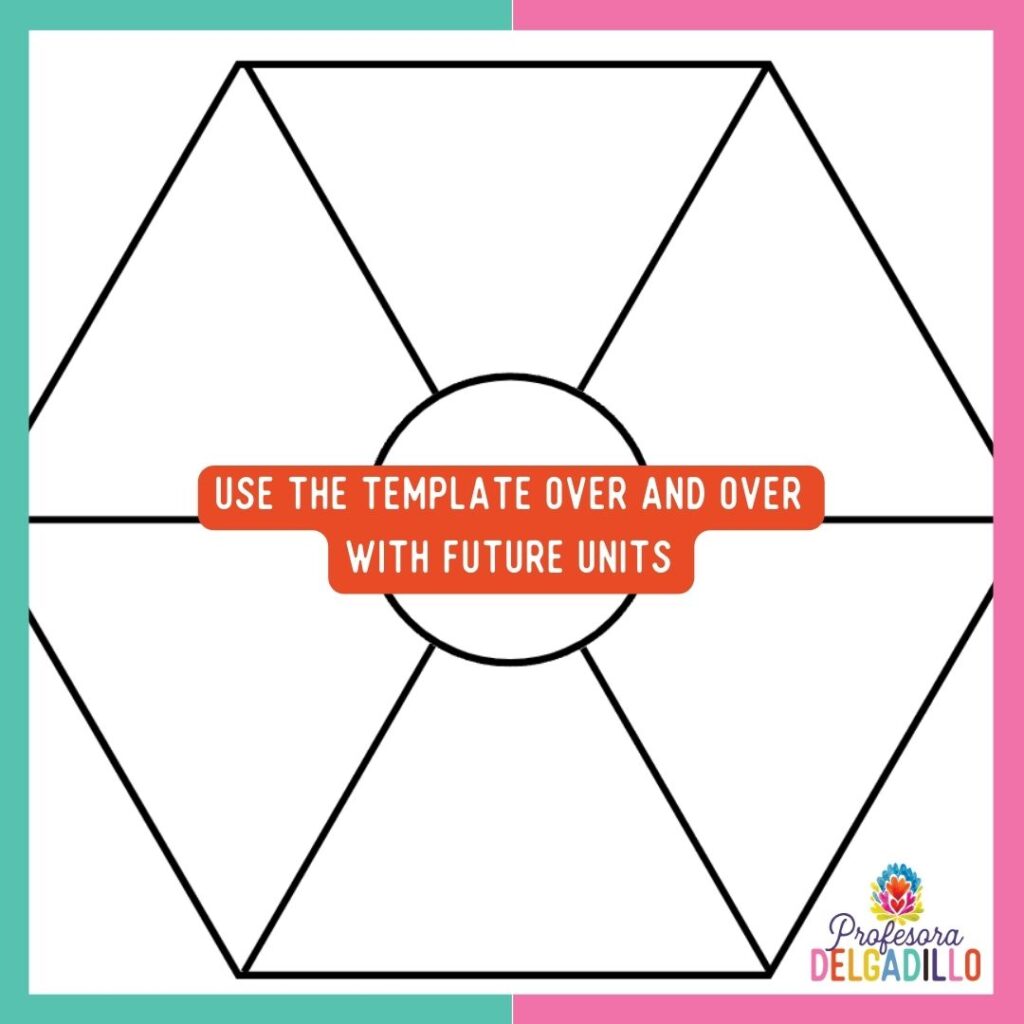

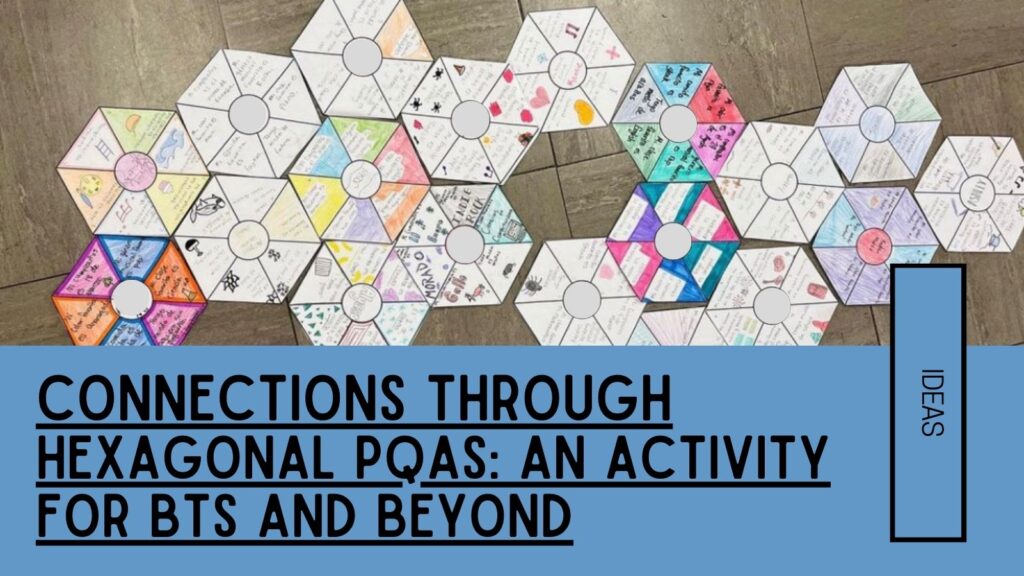
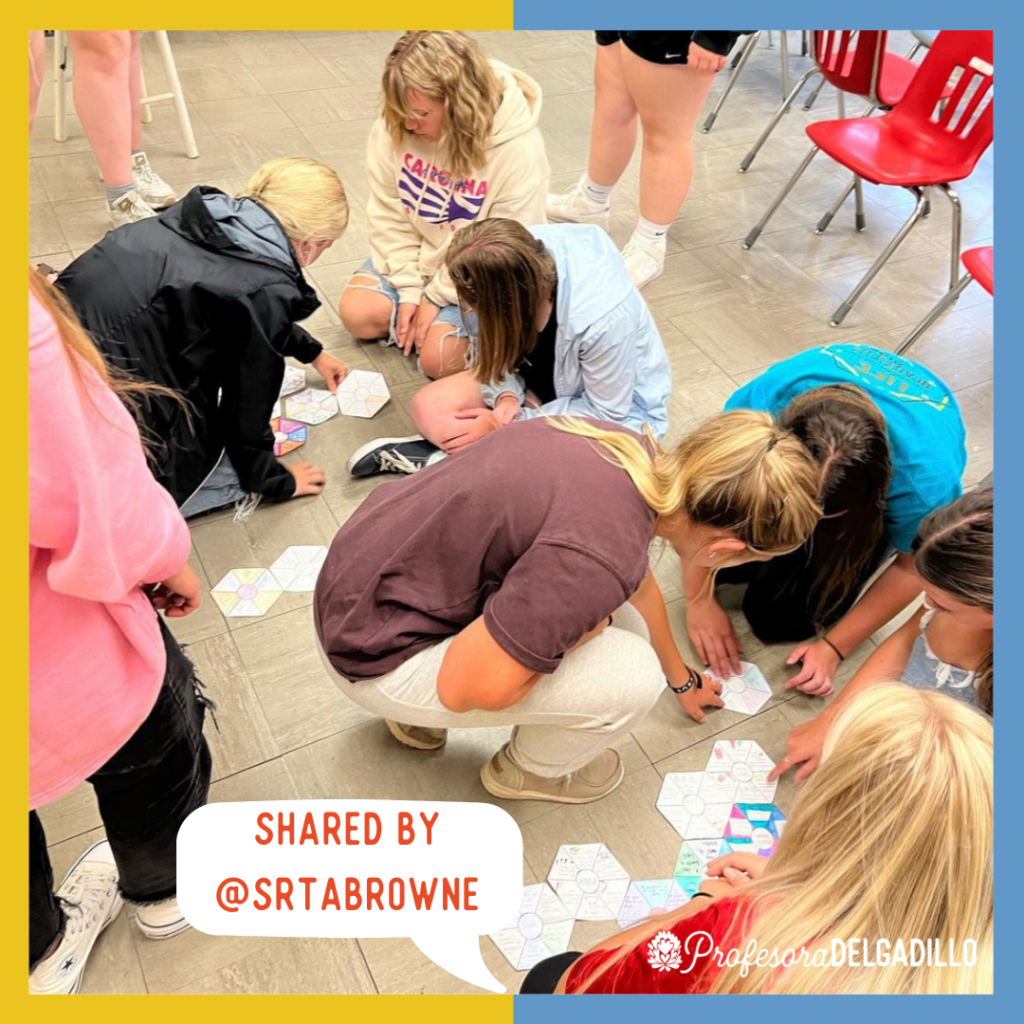
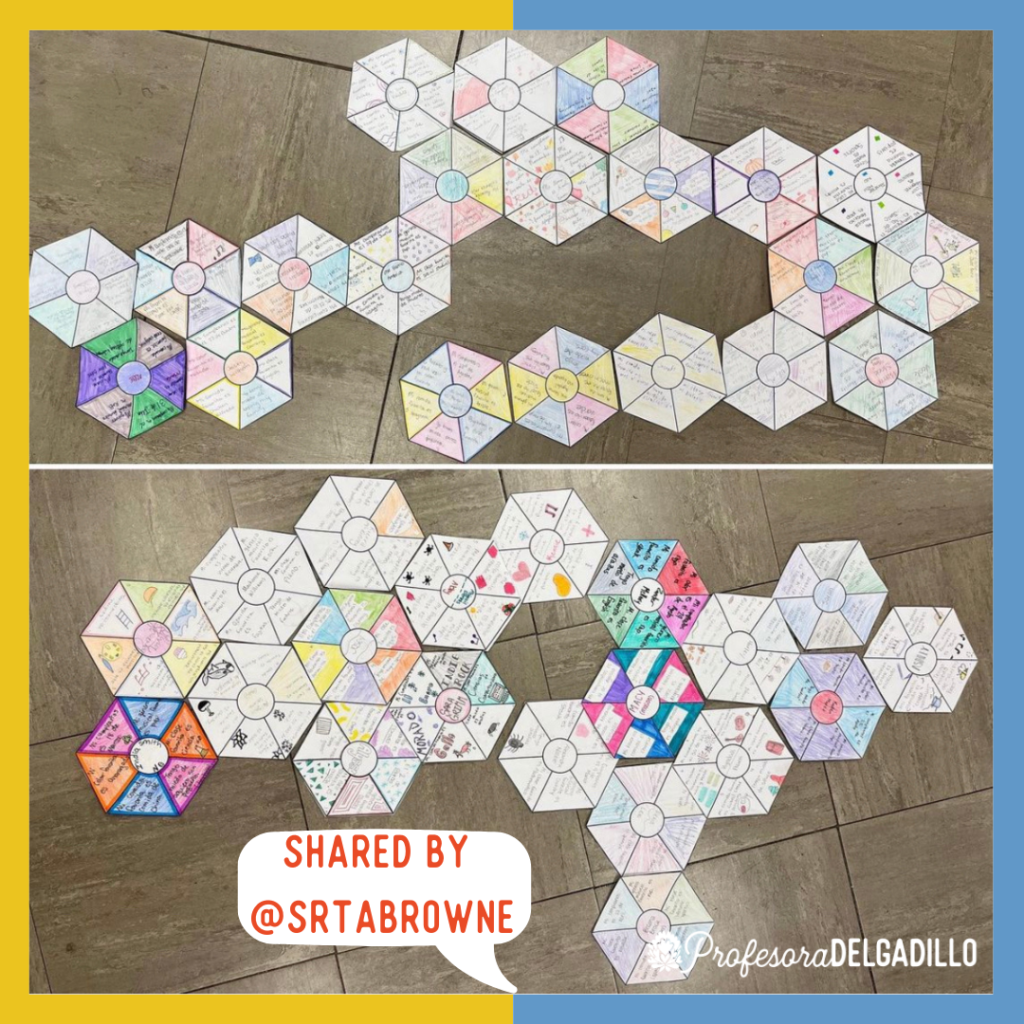
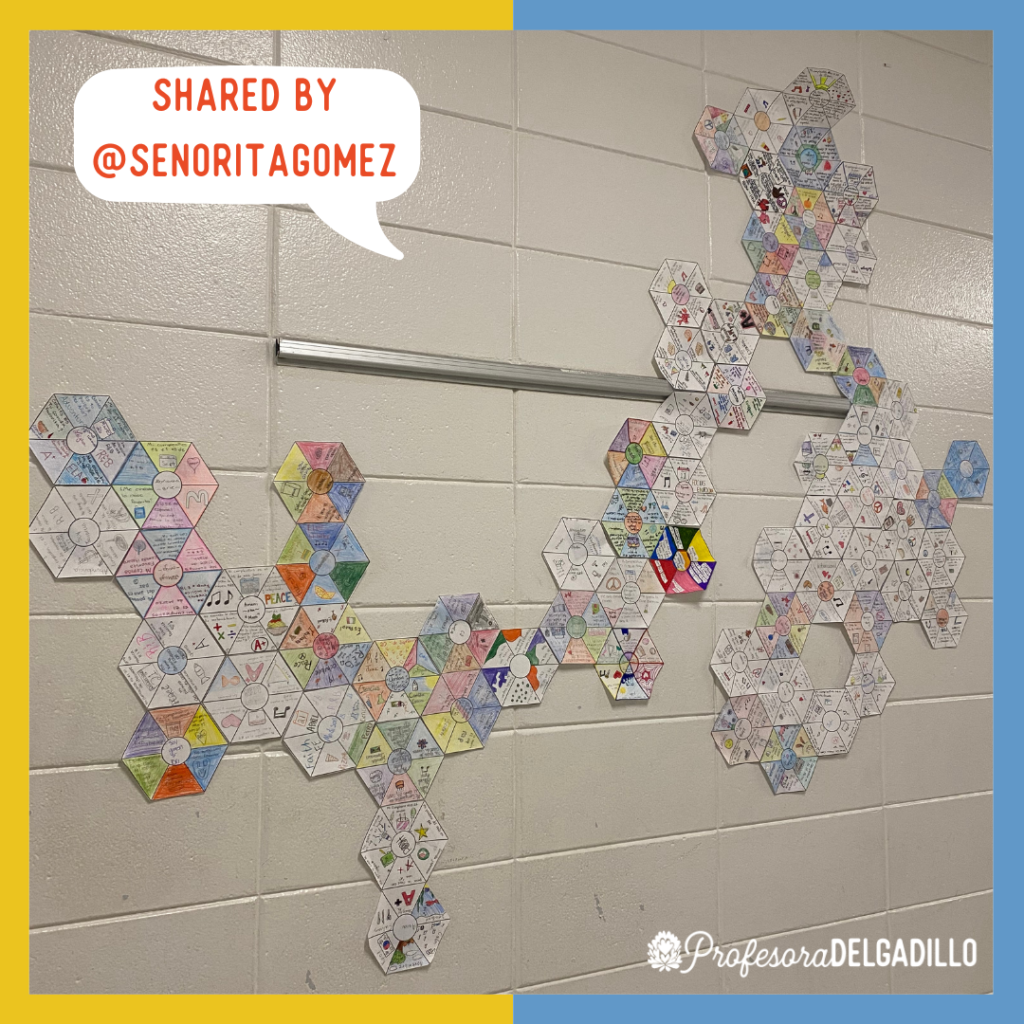
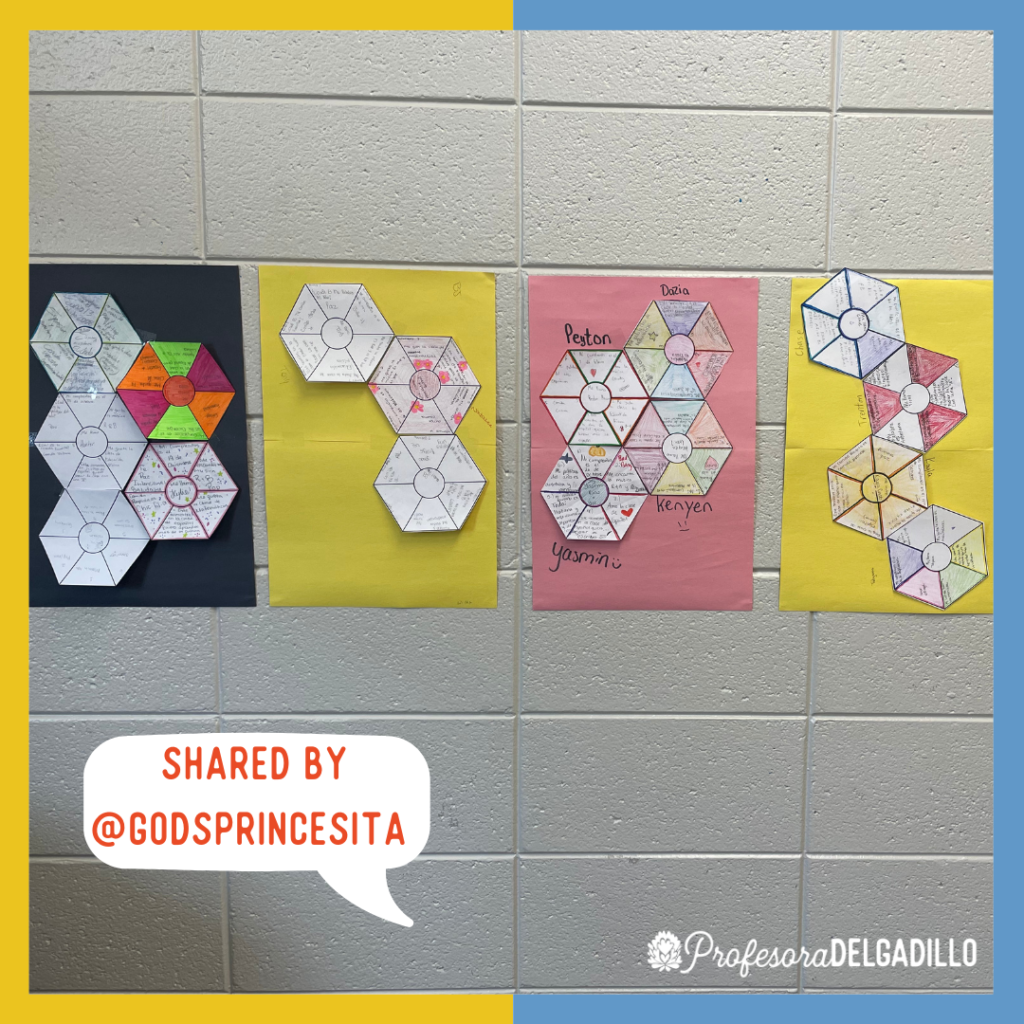
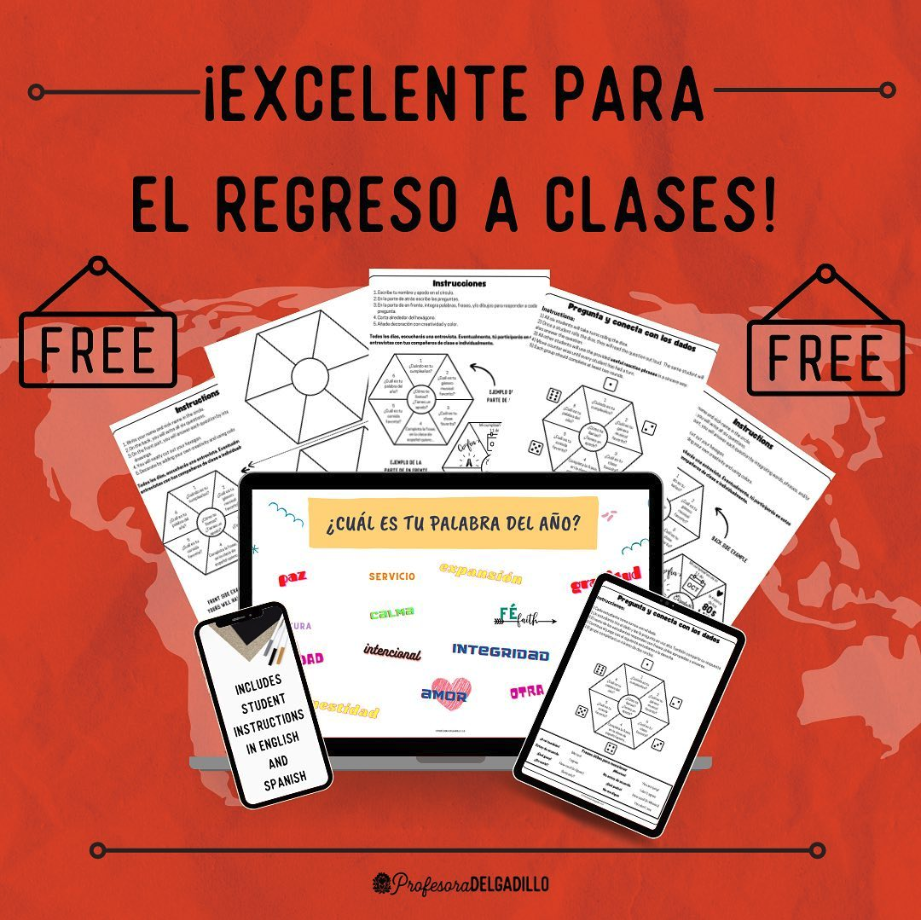
Que pregunta les haría a los de AP? Muchísimas gracias por compartir esta excelente actividad!! La haré el lunes
I just saw this for first time and I can’t wait to try out next week. Thank you so much for sharing and I will tell you how it went.
What a great community building activity! I’m confused about how to organize the handouts, however. Do I copy the hexagonal template on one side & on the other side, the instructions? Do they then cut it and tape or glue together? Is the handout with the questions/dice on a separate handout?
Muchas gracias por compartir. Seguro que lo usaré en mi clase de Español 2, algún día.
Bertha, mil disculpas por molestarte con una cosita personal. He intentado recibir estos recursos fabulosos dos veces y no me han llegado. ¿Me los haría el favor de pasármelos directamente? Me parecen fabulosos. Gracias por compartir.